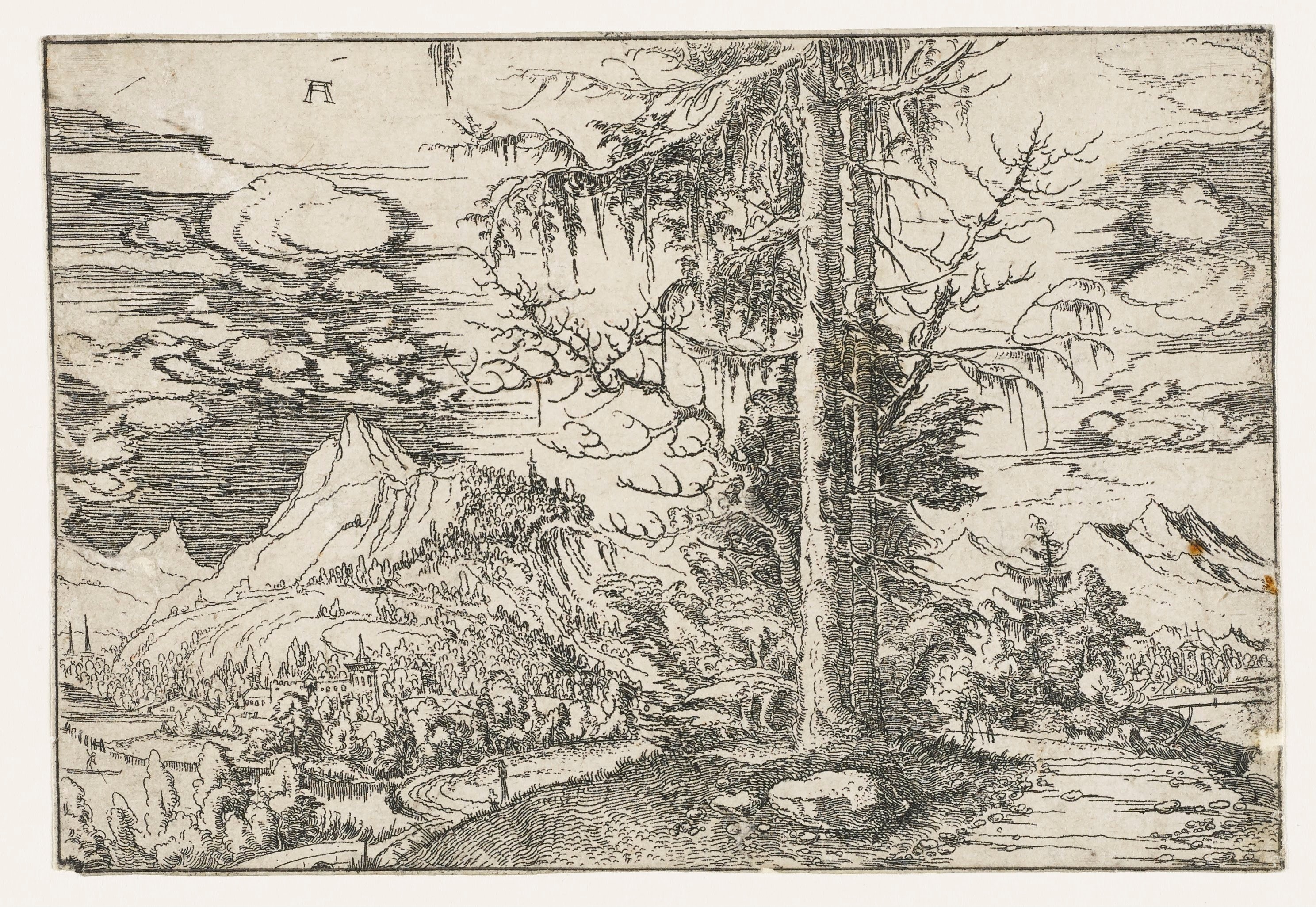In addition to owning nearly all prints by Albrecht Dürer—among these are such famous ones as the woodcuts The Men’s Bath (ca. 1496), The Four Horsemen of the Apocalypse (ca. 1497–98; page 5 of the Apocalypse), and the Rhinoceros (1498), as well as the engravings Adam and Eve (1504), Knight, Death, and the Devil (1513), and Melencolia (1514)—the Department of Prints and Drawings also houses important prints by other German Old Masters. The woodcut came to Europe from China in the 13th century as a relief printing process and is closely related to the spread of paper production. Whereas this technique was first used to create religious images, it was later also employed to depict profane subjects, such as that of The Men’s Bath here. The earliest dated work done in the intaglio printing process of the copperplate engraving goes back to the middle of the 15th century. For this manual engraving process, which because of its hatchings allows the artist to achieve all tones, ranging from the most delicate gray to the deepest black, and thus greater diversity of illustration and expression than the woodcut, the image to be printed is cut into a copper plate by using a burin. An early example of this is Martin Schongauer’s engraving Saint Anthony, Plagued by Demons, which was executed shortly after 1470 and makes the medieval fear of Hell come alive in its imaginative narrative. At the beginning of the 16th century, the etching in the intaglio printing process was added to the woodcut and the engraving. The difficult, timeconsuming work with a cutter or burin was now taken over by a chemical process. Etchings were made by applying acid to a metal plate covered with an acid-resistant etching ground. This meant that the acid ate only into the lines that the artist had exposed with the etching needle in the soft etching ground. This technique made it possible for the artist to “draw” with spontaneous marks on the metal plate: With its light, short strokes, Albrecht Altdorfer’s etching Landscape with a Double Spruce in the Foreground seems much like a finished painting.
de

